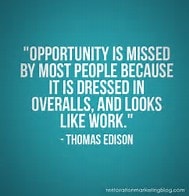Given a chance to talk with someone as connected as Lip-Bu Tan (President and CEO of Cadence and Chairman of the VC firm Walden International), it is tempting to ask all the usual questions about industry growth and directions in cloud, automotive, IIoT, AI and so on. I wanted to try something different. If you make a living (or plan to) in semiconductor design and EDA, this explosion of new technologies makes for interesting reading, but what does it mean for your job? Since all the press seems to be around the mega-companies in these fields (Google, et al), why not look for jobs there, especially given their supposedly stratospheric salaries and the chance to work with bleeding-edge technology?

Lip-Bu acknowledged that superficially it is difficult to compete for talent with these giants. But he made the point that most engineers want to solve difficult problems, and they want to have an impact. The big companies offer the first (if you can make it through the selection process), but not so much of the second. However, thanks to all those new emerging technologies, new problems and opportunities are sprouting like weeds in EDA. And solutions are starting to leverage leading-edge technologies in machine learning, big data analytics, neural nets and cloud-friendly development and deployment. Engineers working in these areas get to work on big hairy problems and learn about and use the latest development platforms.
Lip-Bu pointed to a few big drivers for this change. He mentioned first that a lot more business is now coming from systems companies (representing 40% of revenue for Cadence). Those companies are motivated to get maximum value from partners by offloading as many requirements for expertise as they can. Since what the systems companies are doing is ground-breaking, they expect more collaborative innovation from their partners leveraging state-of-the-art methods like machine-learning where the traditional EDA customer-base might prefer to keep that learning and expertise in-house.
Another interesting driver here in an increasing appreciation for the value of data. Companies like Cadence have incredibly rich stores of data on the architecting, verification and implementation of countless designs across all possible domains. Machine learning techniques can potentially be applied to improve results with specific types of designs like an IP block, for instance, enabling teams to focus more on the big objectives and less on the minutiae so they can get to market faster. Systems companies recognize this advantage and want to tap into it.
Lip-Bu next made a point about why this has become so important and drew an interesting analogy between the pharmaceutical industry and design/EDA. Big pharma traditionally focused on blockbuster drugs—spending a lot of money to develop and test a drug that you could sell to millions. That business model still works, but the real growth is in personalized medicine; cancer treatment is one area where tailored medication looks much more successful than blockbuster approaches. The same trend seems to be happening in design. When you look at the IoT, recognition, differentiation in the cloud, all these areas are driving similar “personalization” by applications in hardware design because it has become clear that customized solutions can get not just a little edge but orders of magnitude advantage over traditional solutions.
That means a lot more designs must be turned a lot more quickly by teams who want to (quickly) deliver the best possible solution for their application, but those teams, in many cases, have no interest in delivering to markets beyond their internal needs. So there’s a big hairy problem – deliver methods to build bigger, faster, lower-power designs but much more quickly and efficiently than can be done today, using a lot more intelligence tapped from that massive database of prior experience.
Lip-Bu stressed several times that Cadence is very much in learning mode with its partners on their needs, but it’s clear to me that they are not waiting to be told exactly what to do. As they learn, they are already aggressively building capability around machine learning, around massive parallelization in the cloud and around a host of other cool solutions to big hairy problems in a wide range of application areas, which I don’t have space to cover here.
So, when you think about whether you want to work for a company like Cadence or a company like Google, consider this. With the big guys, forget about the superstar salaries unless you’re already world-famous. You might still make (some) more money, but you’ll be buried in a giant team where your contribution will be relatively small. Or, you could work in an EDA company where there are lots of hard problems, innovation is essential and you can be a major contributor to an important solution. You can still wax poetic about how what you do makes the rest of this new industrial revolution possible. But it’s nice to be recognized for what you have done too, and it doesn’t hurt your career prospects to know you’re developing skills at the leading edge, just like the big guys.
Share this post via:





Comments
There are no comments yet.
You must register or log in to view/post comments.